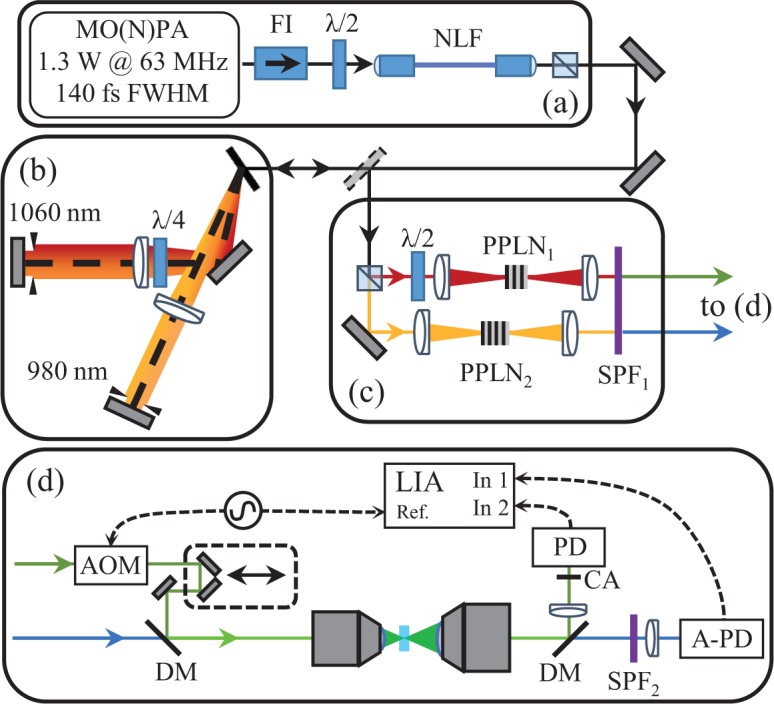Fig. 1.

Schematic of the experiment showing (a) the near-infrared ultrafast source and supercontinuum stage, (b) the two-color Martinez, (c) the two SHG stages, and (d) the transient absorption microscope and detection system. Master Oscillator / Nonlinear Power Amplifier (MO(N)PA) (a) supplies optical pulses through a Faraday isolator (FI) and half wave plate (λ/2) to our nonlinear fiber (NLF). The broadened near-infrared spectrum is then directed to a split Martinez compressor, where one arm is rotating polarization by double-passing a quarter wave plate (λ/4). (c) Individually compressed spectral halves are then focused into periodically poled lithium niobate (PPLN) crystals for conversion to visible wavelength. A short pass filter (SPF1) rejects the remaining near-infrared fundamental before the pump-probe setup (d). An acousto-optic modulator (AOM) imparts a 200 kHz amplitude modulation to the pump pulse train, which is fed to delay line, and combined with the probe by a dichroic mirror (DM) and focused on to the sample with a microscope objective. After collection with a second objective lens, a second dichroic splits pump and probe. The pump is collected by a photodiode (PD) through a confocal aperture (CA), and the probe is collected by an amplified photodiode (A-PD) through an additional short pass filter (SPF2). A lock-in amplifier (LIA) is used to detect the transfer of modulation from the pump onto the probe via transient absorption interactions in the sample.
